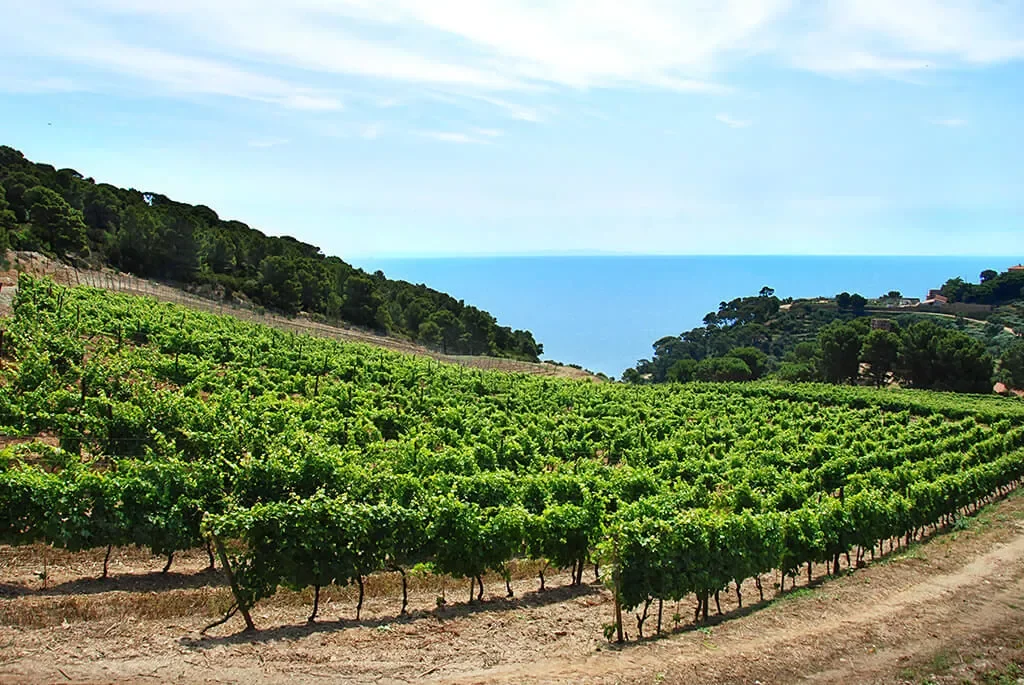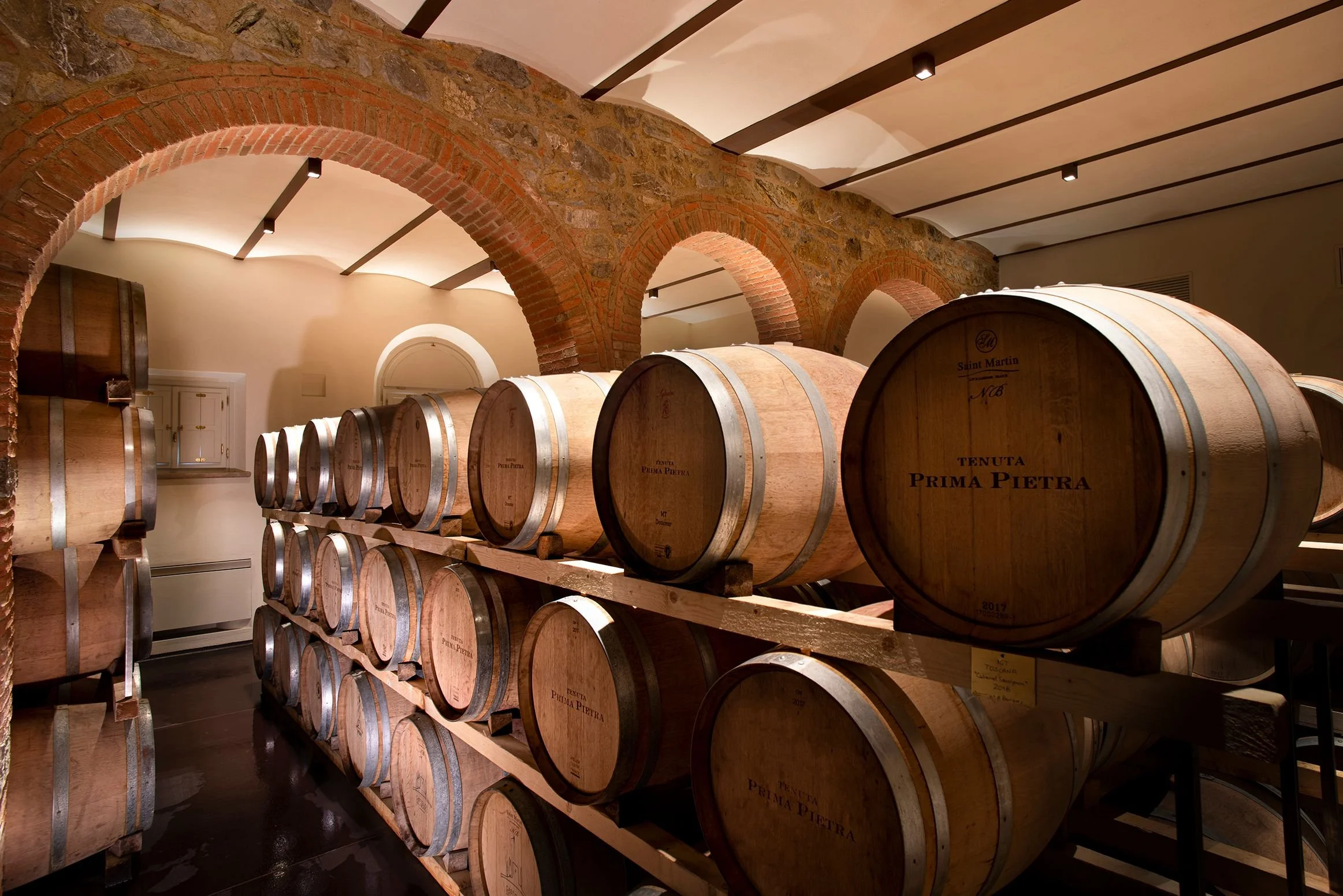VINEYARDS
Explore the incredible wines of Tuscany.












-

Cantina di Fonterutoli
The Mazzei Winery, located in Castello di Fonterutoli, Castellina in Chianti, stands out for its classic contemporary style, functions and spaces. The architect Agnese Mazzei had to face the difficulty of a very complex design: 75% underground cellar, 10,000 square meters, grape process by natural fall. The cellar suddenly appears without breaking that harmonious balance between nature, territory, and the ancient village.
Photo: Random_fotos, CC BY-SA 2.0
-

Cantina di Montalcino
Immersed in a beautiful hilly landscape, is the Cantina di Montalcino, a company specialized in the production of Brunello. For over 40 years it has been the only wine cooperative in the area and has as members about 100 small farms with 160 hectares of vineyards mainly producing the local grape par excellence, Sangiovese. The characteristic roof takes up the natural movement of the Sienese hills. A wooden bridge crosses the entire winemaking floor, while in the basement the wine rests and ages away from noise and lights in oak barrels and barriques. Over 50% of the cellar is underground, as usual, to allow easier temperature control and energy savings.
Photo: Lorenzo.itaca, CC BY-SA 4.0
-

Fattoria le Mortelle
The Fattoria Le Mortelle owes its name to the "Mortella", wild myrtle that characterizes these coastal areas and which has also become the symbol of the company. The company belongs to the Antinori family and is located in Maremma, near Castiglione della Pescaia. The cellar is located on the top of a slight hill overlooking the estate; it is largely underground, with a view to an environmental impact as low as possible. It was built using natural materials, exploiting the thermoregulation of rocks deep in the soil.
Photo: Crazysedum89, CC BY-SA 4.0
-

Tenuta Ammiraglia Frescobaldi
Magliano, the village immersed in the Tuscan Maremma chosen by Frescobaldi to produce his great wines. Inaugurated in 2011 on a project by the architect Piero Sartogo, the Tenuta Ammiraglia immediately stood out among the productive realities of excellence of the territory, integrating perfectly with the surrounding environment and harmonizing with the geometries of the hills and vineyards.
Tenuta Ammiraglia
-

Tenuta Prima Pietra
Tenuta Prima Pietra extends over a hill overlooking the Tyrrhenian Sea and covers 200 splendid hectares, of which 11 are dedicated to the vineyard – Merlot, Cabernet Sauvignon, and Cabernet Franc – and the restis covered by woodland. The Estate's vineyard is the highest on the entire Tuscan coast and is located at 450 meters above sea level.
Tenuta Prima Pietra
-

Ornellaia, Bolgheri
The famous Bolgheri cypresses sung by Carducci are the same that still frame the village of the Livorno Maremma famous for the production of Supertuscan red wines. Since 1981, Tenuta Ornellaia has devoted great attention to the harvest phase, proceeding with the tasting of the grapes to verify the ripening of tannins and identify the best winemaking technique of each individual terroir.
Photo: Ornellaia e Masseto Società Agricola S.r.l.., CC BY-SA 3.0
-

Castello Banfi, Montalcino
South of Montalcino, on the border with the Val d'Orcia, Castello Banfi dominates the Tuscan countryside. Property of the Mariani family since 1978, it is the place par excellence of Brunello, with over two thousand hectares of vineyards surrounded by woods and olive groves. The cellar has the most advanced technologies to preserve the richness of the grapes and focuses on the search for wood, an indispensable material for the aging of wines.
Photo: Graeme Maclean from Glasgow, UK, CC BY 2.0
-

Castello di Verrazzano, Greve in Chianti
The "classic" experience at Castello di Verrazzano begins with a visit full of details and curiosities in the gardens and cellar. Then follows the tasting in the rustic hall, between glasses of Chianti and delicacies, which usually consist of a rich platter of cold cuts and cheeses, concluding with Vin Santo and cantuccini. All produced organically by the company.
Photo: Alfredo Borba, CC BY-SA 2.0
-

Antinori winery, San Casciano Val di Pesa
The Antinori Winery was born both for production reasons and to allow a wide audience of wine enthusiasts to come into direct contact with the production philosophy of the family, offering the opportunity to see how a wine is born, from the vineyard to the bottle, passing through the winemaking and aging paths. It is a work of innovative architecture focused on the deep and rooted bond with the earth, with a low environmental impact, and high energy savings, created by the Archea Associati studio, with the engineering of Hydea, in seven years of work.
Photo: KonstantinaKous, CC BY-SA 4.0
